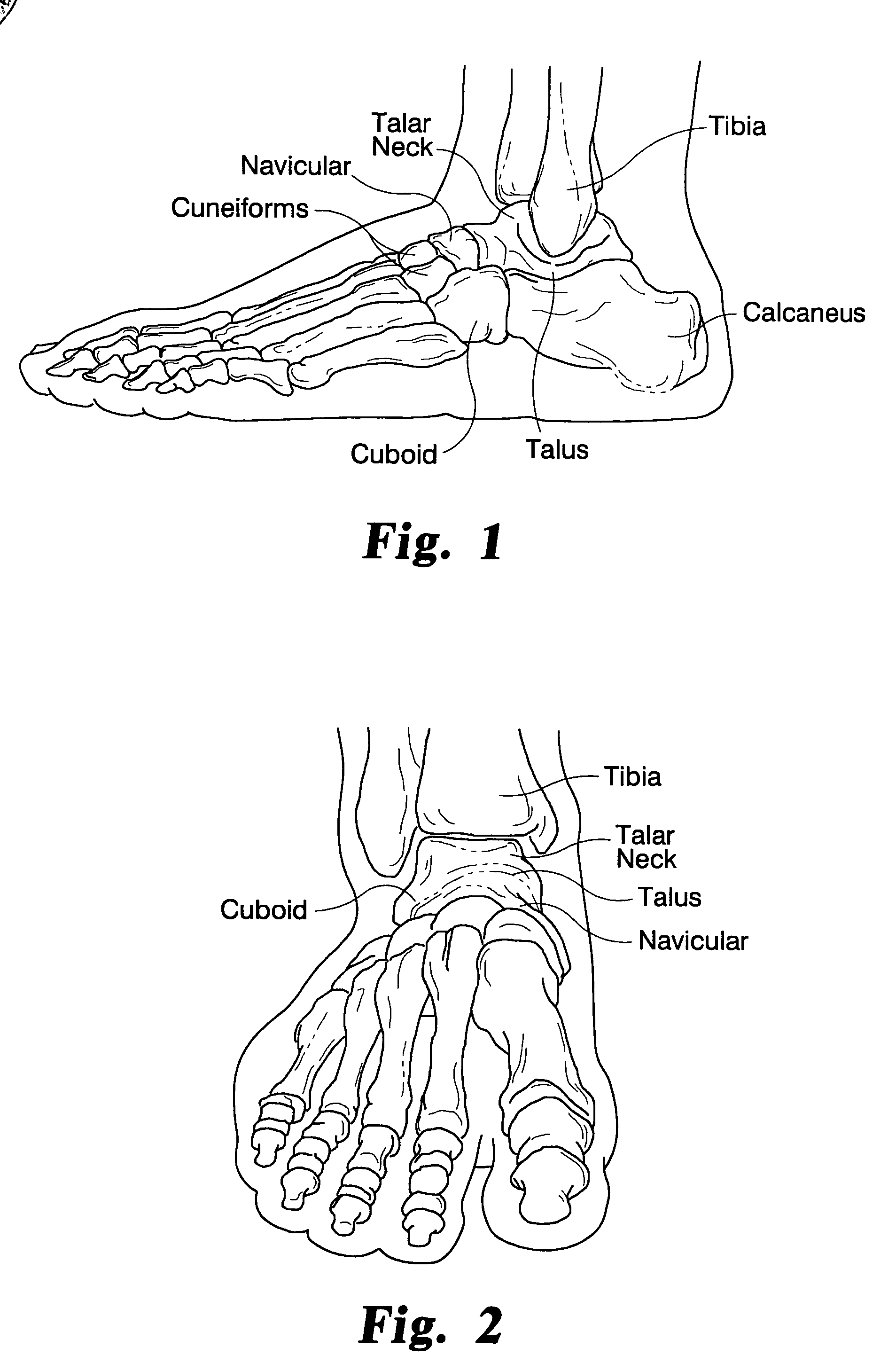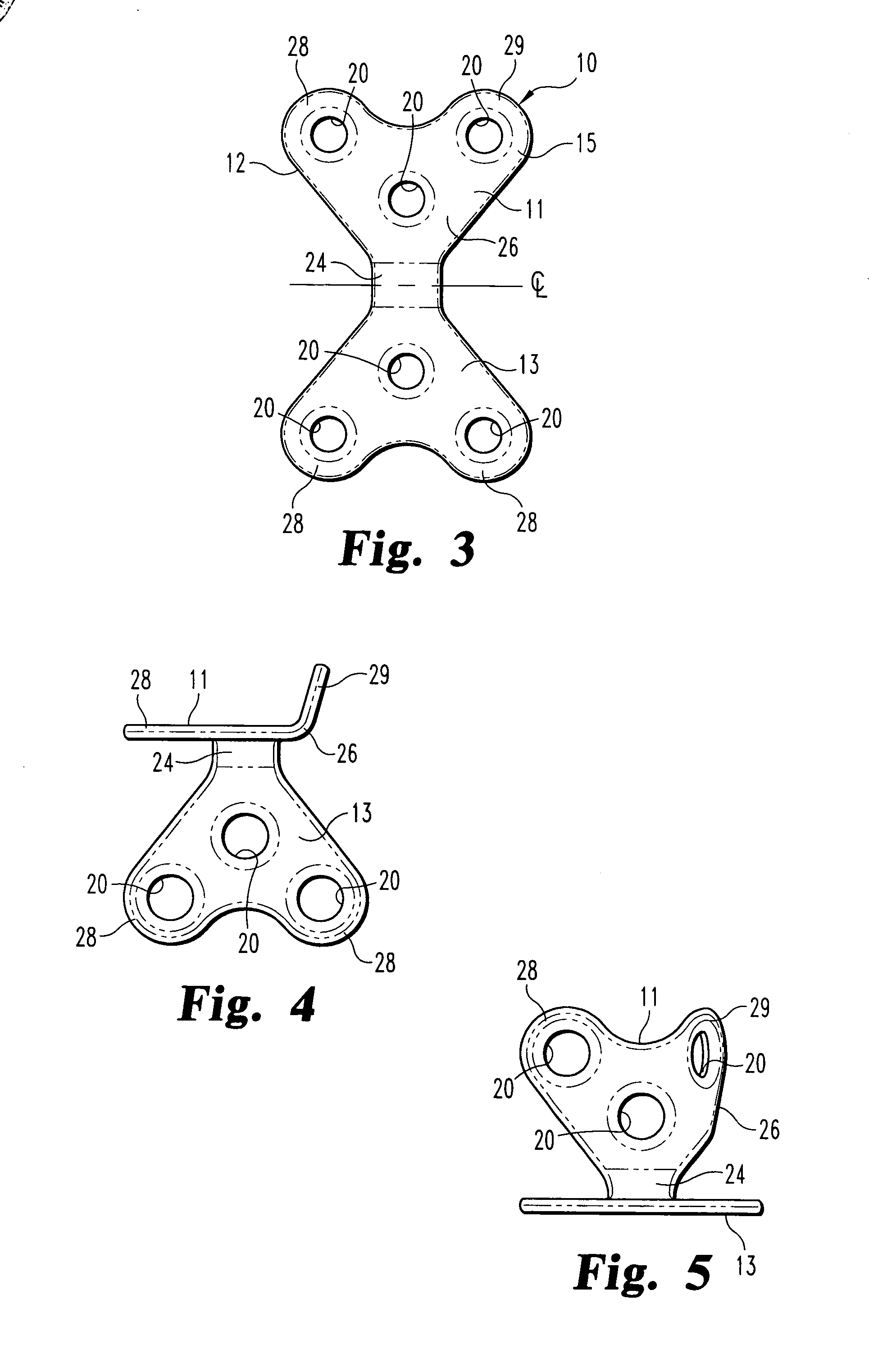Fixation device for the talus
a technology for fixing devices and talus, which is applied in the field of talus bone fixation devices, can solve the problems of difficult repositioning of the bone correctly, reduced and fixed talus fractures, and difficult talus fractures, etc., and achieves the effect of reducing and fixing
- Summary
- Abstract
- Description
- Claims
- Application Information
AI Technical Summary
Benefits of technology
Problems solved by technology
Method used
Image
Examples
Embodiment Construction
[0027] For the purposes of promoting an understanding of the principles of the invention, reference will now be made to the embodiments illustrated in the drawings and described in the following written specification. It is understood that no limitation to the scope of the invention is thereby intended. It is further understood that the present invention includes any alterations and modifications to the illustrated embodiments and includes further applications of the principles of the invention as would normally occur to one skilled in the art to which this invention pertains.
[0028] The present invention provides a fixation device 10 that is initially configured as a flat plate 11, as shown in FIG. 3. The plate has a minimal thickness, about 1.0 mm or less, to reduce the prominence of the plate above the talus. In the preferred embodiment, the plate is formed of a medical grade metal, such as a titanium alloy. Most preferably, the plate 11 is formed of the titanium alloy TI-6AL-4V....
PUM
 Login to View More
Login to View More Abstract
Description
Claims
Application Information
 Login to View More
Login to View More - R&D
- Intellectual Property
- Life Sciences
- Materials
- Tech Scout
- Unparalleled Data Quality
- Higher Quality Content
- 60% Fewer Hallucinations
Browse by: Latest US Patents, China's latest patents, Technical Efficacy Thesaurus, Application Domain, Technology Topic, Popular Technical Reports.
© 2025 PatSnap. All rights reserved.Legal|Privacy policy|Modern Slavery Act Transparency Statement|Sitemap|About US| Contact US: help@patsnap.com



